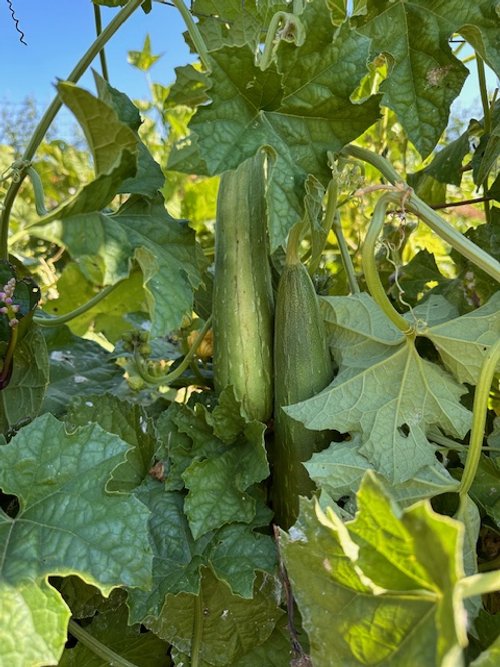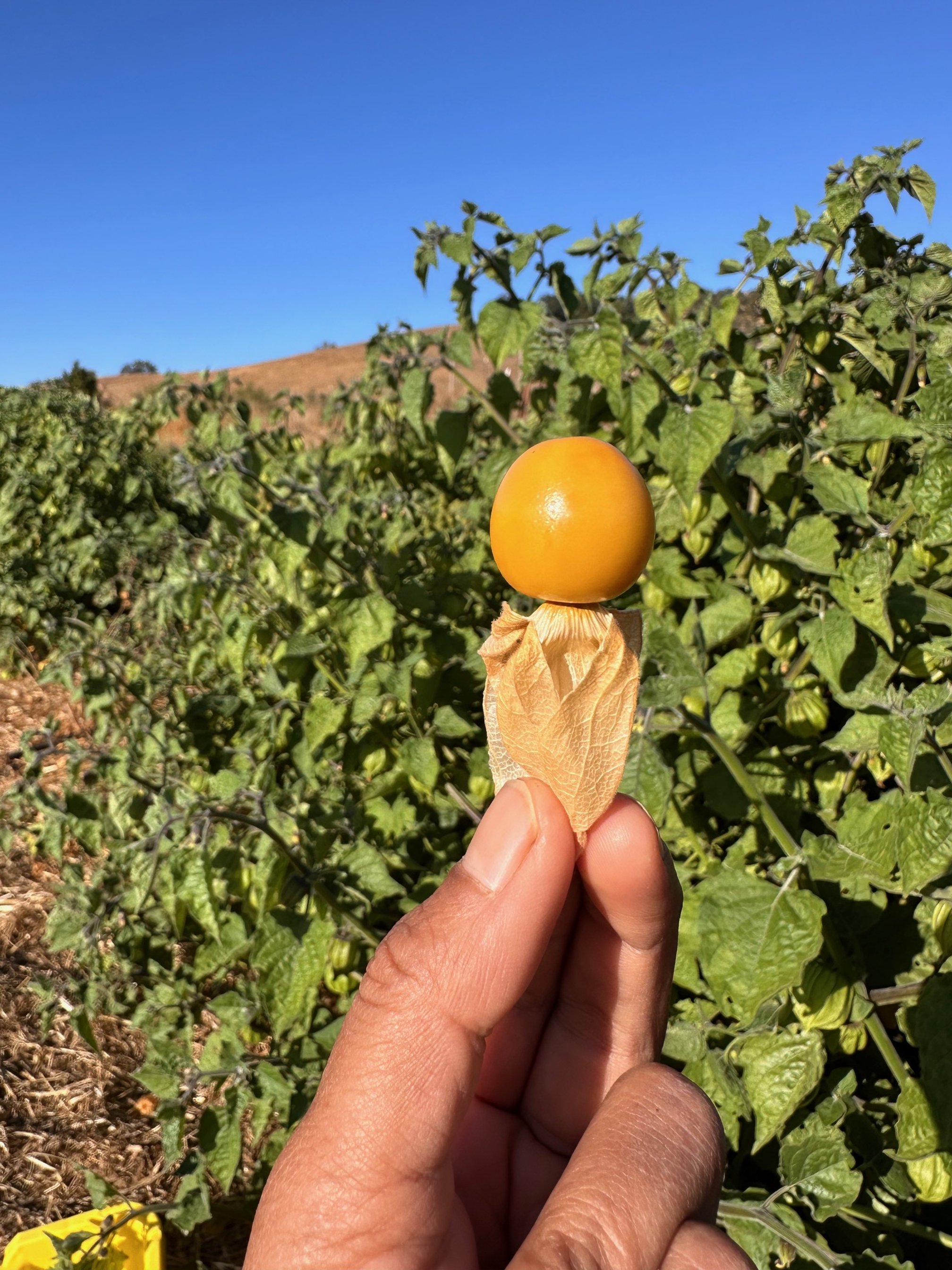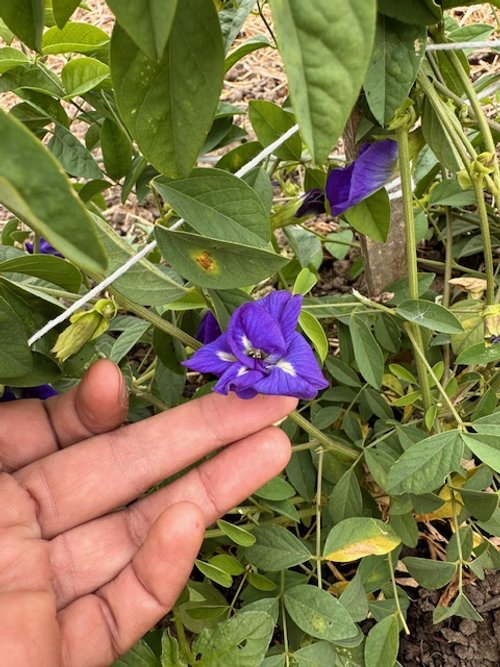 Image 1 of 6
Image 1 of 6

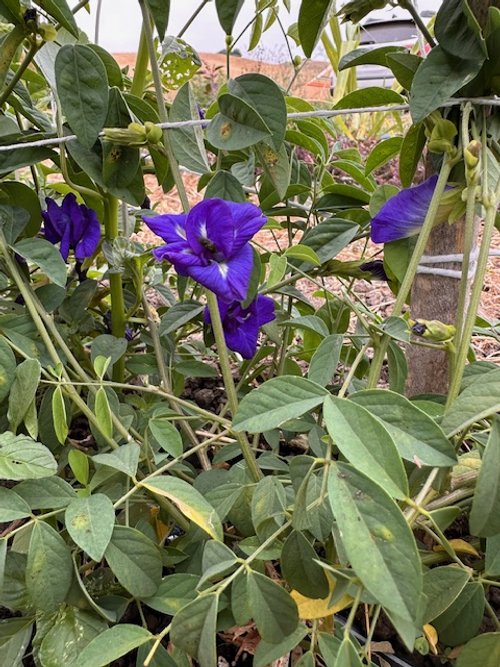 Image 2 of 6
Image 2 of 6

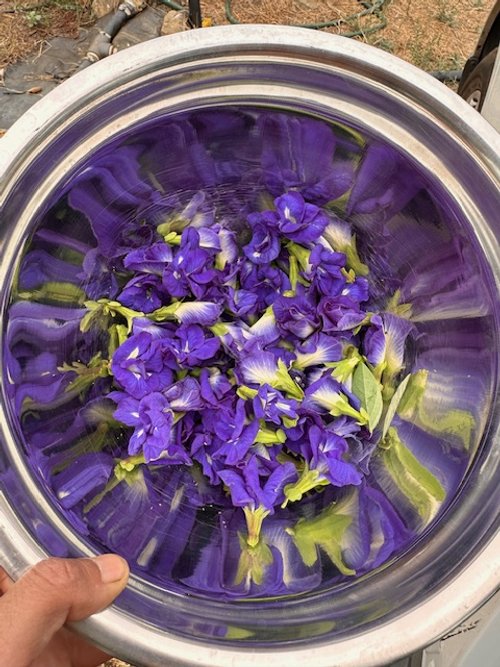 Image 3 of 6
Image 3 of 6

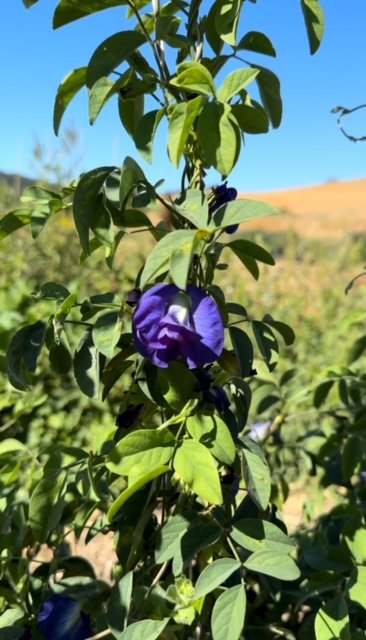 Image 4 of 6
Image 4 of 6

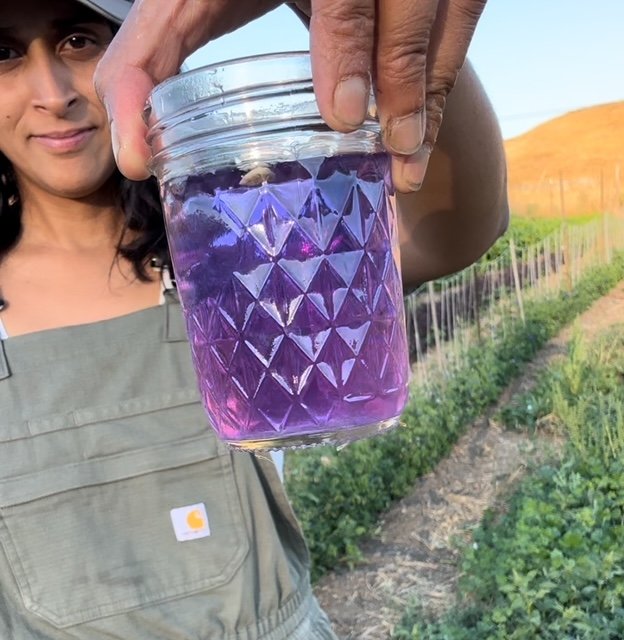 Image 5 of 6
Image 5 of 6

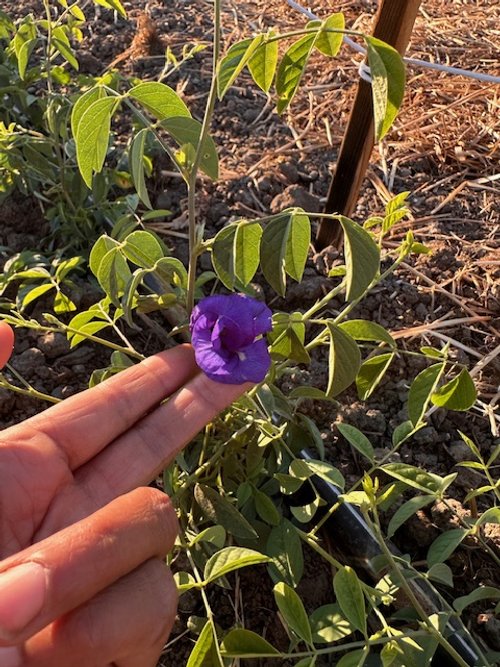 Image 6 of 6
Image 6 of 6







Blue Butterfly Pea
A vining perennial in Zones 10+, this legume grows throughout Asia and has various uses. The flowers are known as "Aparajita" (अपरजिता) in Hindi.
The plant produces deep blue flowers that are typically used as dye. The flowers can also be added to tea, rice or other foods to impart a deep blue color. It has been used for centuries in Ayurveda as a memory enhancer, nootropic, antistress, anxiolytic, antidepressant, anticonvulsant, tranquilizing and sedative agent. The flowers are also used in pujas.
The vine sends out multiple branches that could either be trellised or left to sprawl on the ground. The vine can grow to 4-5 feet tall if trellised. The leaves and flowers both resemble those of other pea plants but the pea pod is only edible when very young and tender. As a legume, the plant fixes nitrogen back into the soil. Prefers full sun.
To make tea:
Use one-quarter of a cup of dried butterfly pea flowers per one to two cups of water. Bring the water to a boil, then remove from heat and add your flowers. Allow them to steep until the water has turned a deep purple or indigo, up to eight minutes. It can be served hot or over ice. Then, add lemon juice and sweetener to taste. As you add the lemon juice, watch the color change from purple to violet!
10 seeds per packet.
Clitoria ternatea
A vining perennial in Zones 10+, this legume grows throughout Asia and has various uses. The flowers are known as "Aparajita" (अपरजिता) in Hindi.
The plant produces deep blue flowers that are typically used as dye. The flowers can also be added to tea, rice or other foods to impart a deep blue color. It has been used for centuries in Ayurveda as a memory enhancer, nootropic, antistress, anxiolytic, antidepressant, anticonvulsant, tranquilizing and sedative agent. The flowers are also used in pujas.
The vine sends out multiple branches that could either be trellised or left to sprawl on the ground. The vine can grow to 4-5 feet tall if trellised. The leaves and flowers both resemble those of other pea plants but the pea pod is only edible when very young and tender. As a legume, the plant fixes nitrogen back into the soil. Prefers full sun.
To make tea:
Use one-quarter of a cup of dried butterfly pea flowers per one to two cups of water. Bring the water to a boil, then remove from heat and add your flowers. Allow them to steep until the water has turned a deep purple or indigo, up to eight minutes. It can be served hot or over ice. Then, add lemon juice and sweetener to taste. As you add the lemon juice, watch the color change from purple to violet!
10 seeds per packet.
Clitoria ternatea
A vining perennial in Zones 10+, this legume grows throughout Asia and has various uses. The flowers are known as "Aparajita" (अपरजिता) in Hindi.
The plant produces deep blue flowers that are typically used as dye. The flowers can also be added to tea, rice or other foods to impart a deep blue color. It has been used for centuries in Ayurveda as a memory enhancer, nootropic, antistress, anxiolytic, antidepressant, anticonvulsant, tranquilizing and sedative agent. The flowers are also used in pujas.
The vine sends out multiple branches that could either be trellised or left to sprawl on the ground. The vine can grow to 4-5 feet tall if trellised. The leaves and flowers both resemble those of other pea plants but the pea pod is only edible when very young and tender. As a legume, the plant fixes nitrogen back into the soil. Prefers full sun.
To make tea:
Use one-quarter of a cup of dried butterfly pea flowers per one to two cups of water. Bring the water to a boil, then remove from heat and add your flowers. Allow them to steep until the water has turned a deep purple or indigo, up to eight minutes. It can be served hot or over ice. Then, add lemon juice and sweetener to taste. As you add the lemon juice, watch the color change from purple to violet!
10 seeds per packet.
Clitoria ternatea
